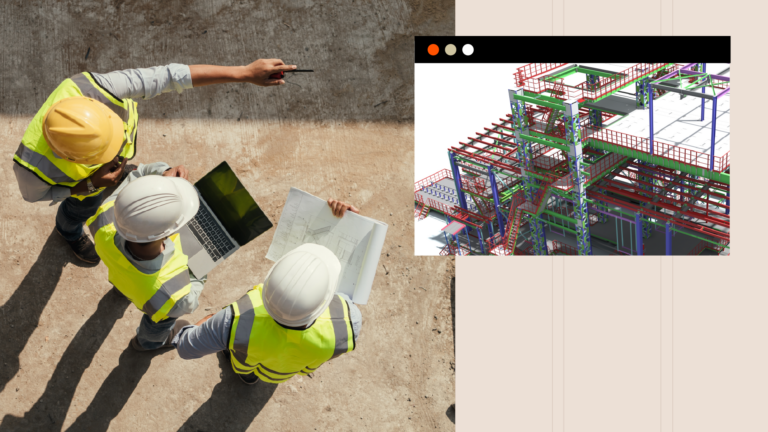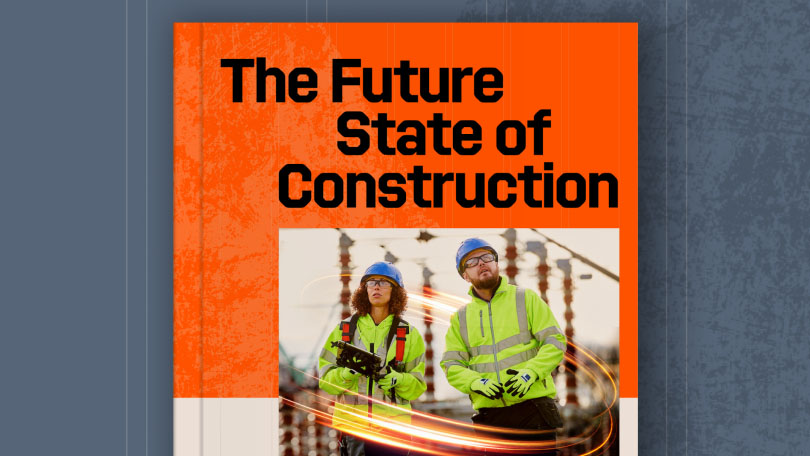— 6 min read
Building a Future-Ready Workforce Strategy

Last Updated Aug 28, 2025

Nicholas Dunbar
Content Manager
62 articles
Nick Dunbar oversees the creation and management of UK and Ireland educational content at Procore. Previously, he worked as a sustainability writer at the Building Research Establishment and served as a sustainability consultant within the built environment sector. Nick holds degrees in industrial sustainability and environmental sciences and lives in Camden, London.
Last Updated Aug 28, 2025

A record £37 billion of publicly funded projects will break ground across the UK in the next three years, yet CITB forecasts a shortfall of 225,000 construction workers by 2027. Labour concerns are the most-cited challenge among the 1,200 executives surveyed according to Procore’s new Future State of Construction report.
If you wait until a vacancy appears, it’s too late. A future-ready workforce strategy - one that blends culture, two-way knowledge sharing and continual upskilling - lets you fill roles from within and attract the talent you still need from outside.
“The future of construction is fueled by people, connected platforms, and data.”
- Tooey Courtemanche, Procore Founder & CEO
Table of contents
Culture as a Strategic Tool
Culture isn’t soft; it’s structural. That’s one of the headline takeaways from the Future State of Construction report - a study built on surveys and interviews across eight regions, the UK included. The report tracks how culture, technology, data and design converge, and it makes a clear case: firms that nurture high-trust, learning-centred environments keep people longer, whilst also extracting more value from every new tool they roll out.
The report states that 65% of construction professionals (20% being “very high” and 45% “high”) say that adopting new technology has a high or very high influence on their company’s culture and overall resilience to risk.
Here’s how to turn those insights into action:
• Setting clear values – emphasise safety, wellbeing and growth in every site induction.
• Rewarding curiosity – recognise employees who trial new digital tools or suggest process tweaks.
• Valuing time to learn – ring-fence CPD hours just as strictly as programme milestones.
The result: workers feel invested in, not extracted from - reducing churn when competing firms wave higher day rates.
What This Means for HR & Training Managers
- Embed culture KPIs (e.g., psychological-safety score) into quarterly reviews.
- Add “curiosity” to performance criteria: reward staff who trial new tools.
- Co-own culture metrics with project execs; it’s not just an HR dashboard.
Two-Way Knowledge Transfer: Bridging the Generational Gap
Nearly one in five UK construction workers is over 55. When they retire, they take decades of wisdom and know-how with them. Buddying them up with digital natives (or their younger counterparts) creates a virtuous loop:
Veteran teaches → sequencing tricks, contract pitfalls, trade relationships.
Newcomer teaches → 3D model navigation, field-data capture, mobile snag lists.
Alongside preserving knowledge, this transfer of information accelerates tech adoption, boosts engagement on both sides of the age gap and keeps valuable skills in-house. In short, you get a tighter talent pipeline and a faster pay-back on every new tool you roll out.
Five Steps to Launch a Mentorship Programme
The FSoC survey shows 42% of leaders rank upskilling as one of the single biggest drivers of successful digital transformation, while 45%of workers place technical-skills training at the top of their personal development wish-list. Use the following steps to foster an effective, longlasting mentoring scheme:
- Map critical skills: identify roles at risk when senior staff leave.
- Match mentors and mentees: blend trade expertise with tech curiosity.
- Set SMART objectives: e.g., “Teach quantity-take-off workflows in Revit within eight weeks.”
- Allocate paid mentoring time: log hours like any other project task.
- Track outcomes: measure mentee readiness and mentor engagement quarterly.
Upskilling for the Construction Renaissance
The FSoC report shows 60% of leaders stay in construction for career advancement or skills growth. Offer those pathways and you’ll keep them. Before you can capitalise on mentorship gains, you need a training engine that continuously feeds new knowledge into the organisation:
• Micro-learning on site: short mobile modules covering topics like drone safety checks or digital permits.
• Formal qualifications: fund NVQs or degree apprenticeships aligned to your pipeline.
• Cross-trade tasters: rotate apprentices through MEP, façade and fit-out teams to build versatile problem-solvers.
The pay-off is twofold: employees get the progression they desire, and you gain a deeper bench of multiskilled people ready to pick up new tech and new roles as projects - and the wider market - evolve.
Quick Wins for Improving On-the-Job Training
If budget cycles or busy programmes limit how much formal training you can roll out right now, start small - these rapid-fire tactics move the needle now:
- Add QR codes to plant that link to bite-size operating videos.
- Run “Toolbox Tech Tuesdays” where a site engineer demos a new app in 15 minutes.
- Invite supply-chain partners to co-host CPD sessions, sharing cost.
Technology Is a Tool - People Unlock the ROI
You can licence the best platform, but without trained users it’s dead weight.
• 18%of total project time is spent searching for data.
• 28%of project time is lost to rework or rectifying issues.
Construction teams already juggle complex schedules, safety checks, and client demands; new software has to fit that reality to deliver returns. The right enablement - clear roles, targeted training, and on-site champions - helps crews translate digital features into faster decisions and fewer defects.
Tie every tech rollout to a people plan:
- Stakeholder mapping: who needs to click the buttons?
- Skills gap analysis: survey competency before onboarding.
- Hands-on labs: let crews practise in a sandbox, not on live data.
- Field champions: appoint one “super-user” per gang to give on-site support.
- Feedback loop: collect usage metrics and refine training monthly.
Leveraging Workforce Data for Smarter Decisions
The same dashboards you use to track cost variance can surface people insights:
- Heat-map skill shortages by region to inform recruitment drives.
- Monitor training completion versus defect rates to prove ROI.
- Predict retirements using age profiles, then fast-track successors.
- Female & diverse-talent insights: track participation rates by demographic to ensure your pipeline taps the full labor market, not just the usual suspects.
When HR and operations share a single view, you spot gaps early - just like spotting a design clash before it pours concrete.
Becoming the Employer of Choice
Competitive differentiation now hinges on employment brand as much as bid price. A future-focused culture signals:
- Stability: Clear career ladders mitigate project-to-project uncertainty.
- Safety & Wellbeing: Mental-health first aiders and flexible rostering demonstrate genuine care.
- Innovation: Exposure to drones, BIM, and AI attracts tech-savvy graduates who might otherwise pursue careers in fintech.
Action Plan: 30-Day Kick-Start Checklist
☐ Conduct a one-page skills gap audit for each live project.
☐ Select two high-impact digital tools and schedule hands-on labs.
☐ Pair at least three senior craftworkers with junior tech-savvy mentees.
☐ Block out 2 hours of paid learning time per employee per month.
☐ Publish a culture manifesto and share it during every site induction.
Invest in People, Safeguard Profit
Labour shortages aren’t a blip; they are the new baseline. Firms that treat workforce strategy with the same rigour as cost planning will out-deliver, out-innovate and out-recruit the competition.
With 55%of executives saying automation is “extremely” or “very” likely to disrupt construction within five years, the firms that upskill first will harvest the early productivity gains.
Adopt a culture of continuous learning, enable two-way knowledge transfer and commit to upskilling at every level. The return is clear: higher retention, quicker tech ROI and a resilient talent pipeline ready for whatever the UK construction market builds next.
Explore the Future State of Construction
Stronger culture, smarter mentoring, and continuous upskilling slash turnover, accelerate tech adoption, and keep projects moving when labour markets tighten. Discover the playbook high-performing firms use to stay fully staffed and future-ready.
Backed by data from 1,000+ executives across 14 countries, the FSoC report is the industry’s most comprehensive productivity benchmark to date.
Download your free, 35-page Future State of Construction report now.
Categories:
Written by

Nicholas Dunbar
Content Manager | Procore
62 articles
Nick Dunbar oversees the creation and management of UK and Ireland educational content at Procore. Previously, he worked as a sustainability writer at the Building Research Establishment and served as a sustainability consultant within the built environment sector. Nick holds degrees in industrial sustainability and environmental sciences and lives in Camden, London.
View profileExplore more helpful resources

Control the Chaos: Standardising Document Workflows in Construction Projects
Document control and implementation play a central role in managing risk, meeting deadlines, and delivering projects to spec. As builds become more complex and teams increasingly disperse, the volume and...

Cost-Plus Construction Contracts in the UK
A construction cost-plus contract – sometimes called a cost-reimbursable or prime cost contract – reimburses all project costs and adds a fee to cover the contractor’s overhead and profit. UK...

Digital Construction Technology for Whole-Life Value
For decades, the construction industry has kept a narrow focus on capital cost — the one-time, upfront costs of a construction project. While in the short term this seems like...

UK Construction Progress Reports: Tools for Smarter Site Management
Construction progress reports track completed work, on site issues, costs, and safety so UK project teams can demonstrate progress, secure payments, and stay on programme. Accurate progress data is essential...
